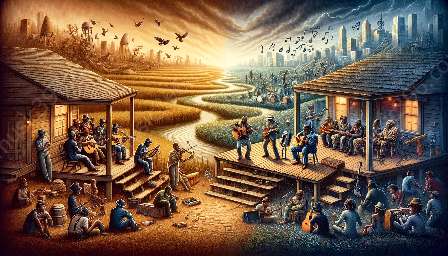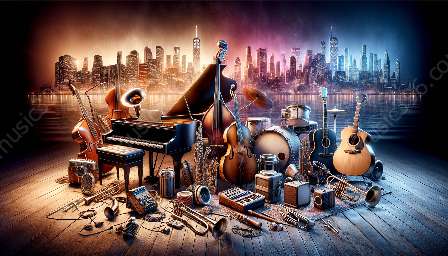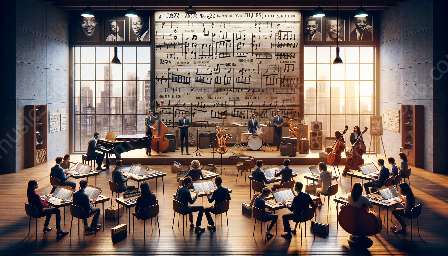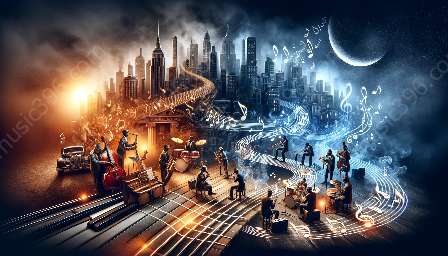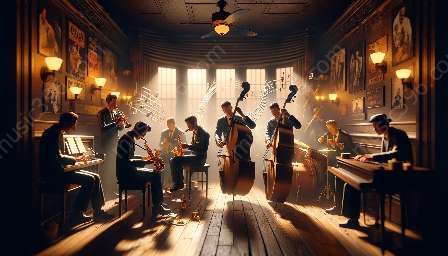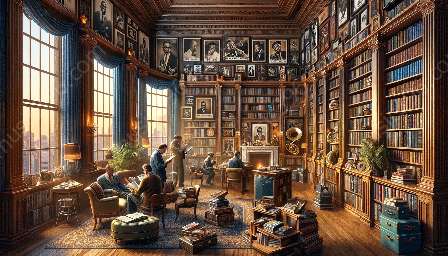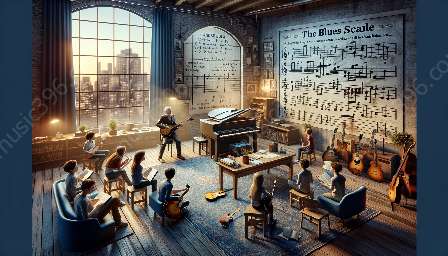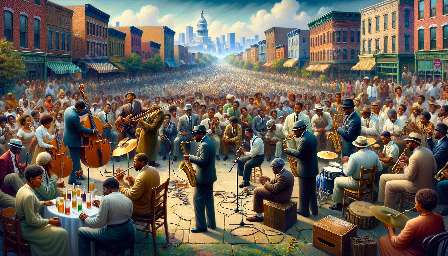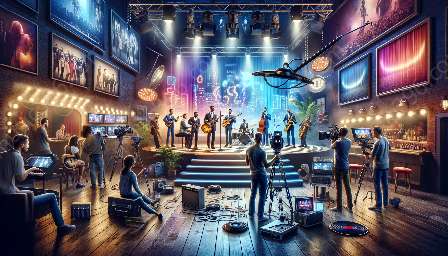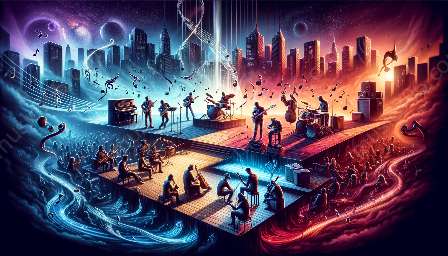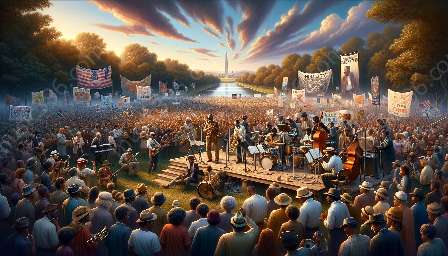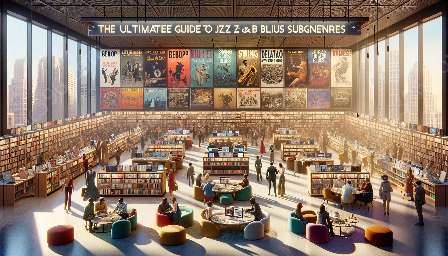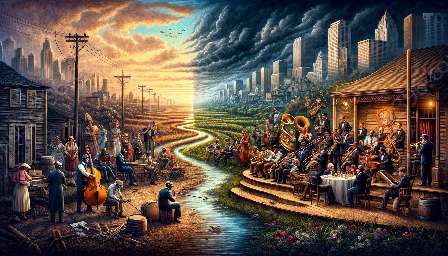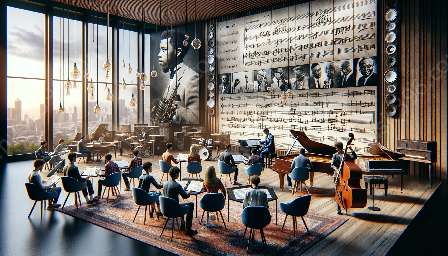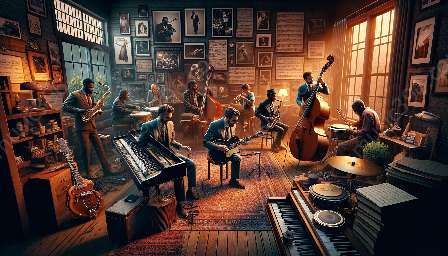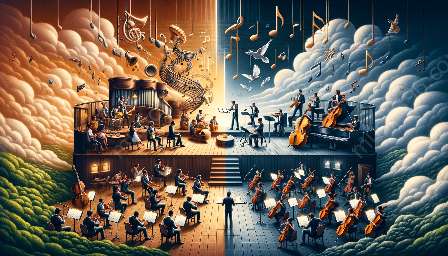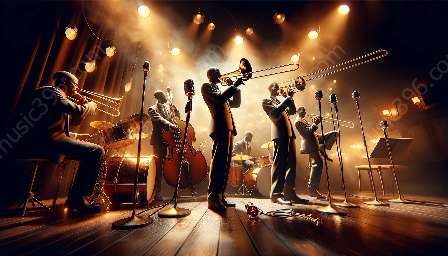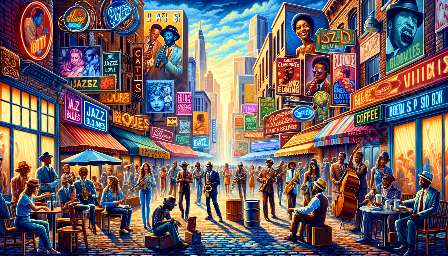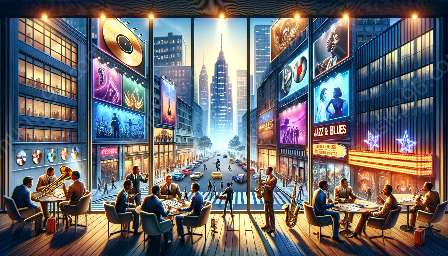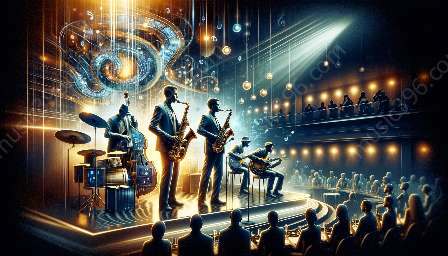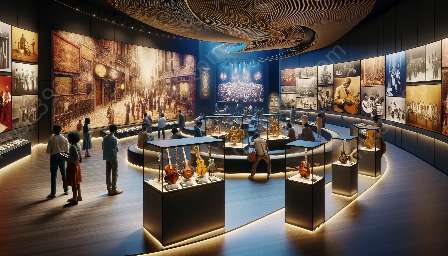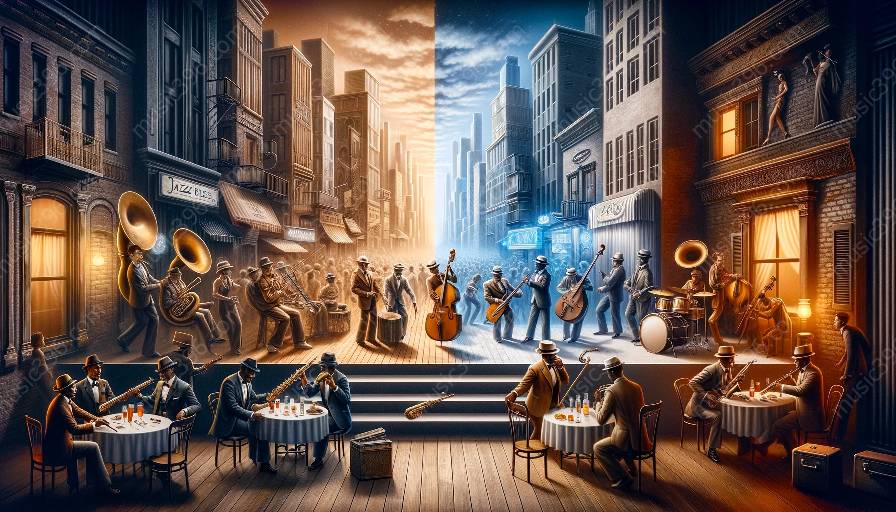Jazz, with its vibrant rhythms and improvisational nature, has left an indelible mark on the broader arts and entertainment industry, transcending the boundaries of music and influencing various art forms and cultural expressions. This intersection with other artistic mediums has given rise to a rich tapestry of collaborations, innovations, and cultural movements.
Jazz and Visual Arts
The visual arts have been deeply influenced by the sounds and spirit of jazz. From the dynamic brushstrokes of Abstract Expressionism to the evocative imagery of Harlem Renaissance artists, jazz has served as a muse for countless painters, sculptors, and photographers. The syncopated rhythms, syncopated beats, and creative energy of jazz have inspired visual artists to capture the essence of the music in their works, resulting in a fusion of sound and sight that continues to captivate audiences.
Jazz and Film
The cinematic world has been a canvas for jazz to weave its magic, with iconic soundtracks and scores that have elevated the emotional depth of storytelling. From film noir classics to modern blockbusters, jazz music has enhanced the mood and narrative of countless movies, creating a symbiotic relationship between sound and image. The influence of jazz on film extends beyond music, as the improvisational spirit of jazz has influenced the art of storytelling and character development, contributing to the evolution of cinematic narratives.
Jazz and Dance
The infectious rhythms of jazz have ignited the world of dance, inspiring movements that reflect the spontaneity and exuberance of the music. From the exuberant Charleston of the 1920s to the innovative choreography of contemporary dance, jazz has served as a catalyst for breaking traditional boundaries and exploring new forms of movement. The synergy between jazz and dance has given birth to iconic dance styles, such as tap and jazz dance, and has provided a platform for dancers to express themselves with unparalleled freedom and creativity.
Jazz and Literature
Writers and poets have drawn inspiration from the raw emotion and lyrical quality of jazz, infusing their literary works with the essence of the music. Jazz poetry, in particular, emerged as a distinct form of literary expression, blending the rhythm and cadence of jazz with the power of words. The transcendent themes of love, loss, and resilience found in jazz have resonated deeply with writers, resulting in the creation of literary masterpieces that echo the soulful melodies and improvisational spirit of the music.
Jazz and Cultural Movements
Throughout history, jazz has intersected with various cultural movements, offering a platform for social commentary and activism. From the civil rights era to the Harlem Renaissance, jazz has been a powerful catalyst for articulating the struggles and aspirations of marginalized communities. The genre's ability to transcend racial and social barriers has made it a symbol of unity and empowerment, leading to collaborations with artists from diverse backgrounds and the amplification of voices that have historically been silenced.
Conclusion
The influence of jazz on the broader arts and entertainment industry is a testament to the enduring power of this musical genre. Its ability to inspire and collaborate across different artistic mediums has shaped cultural landscapes and created a legacy that continues to resonate with audiences worldwide.


